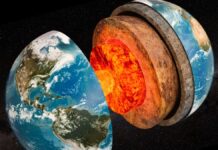This week, skywatchers will have the opportunity to witness a striking celestial event: the moon passing in close proximity to the planet Saturn. The pairing is visible to the naked eye from both hemispheres and will be most prominent in the evening sky.
What to Expect
The moon, shining with its characteristic silver glow, will appear near Saturn’s fainter, golden light. This contrast is particularly beautiful when viewed from areas with minimal light pollution. On November 29th at 19:00 GMT, as seen from London, the two objects will be approximately 3.75 degrees apart – a distance easily observable without any equipment.
Key Details
- Timing: The closest approach occurs at 19:08 GMT.
- Phase: The moon will be nine days old, in its waxing gibbous phase, with roughly 66% of its visible surface illuminated.
- Constellations: The moon will be located within Pisces (the Fishes), while Saturn will be just across the border in Aquarius (the Water Bearer).
- Visibility: The pairing is easily visible to the naked eye, and binoculars will easily capture both objects in a single field of view. Most telescopes will also have no problem.
Why This Matters
While conjunctions like this happen frequently, they provide a simple yet stunning reminder of the dynamic nature of our solar system. These alignments were historically significant for navigation and timekeeping, and today they continue to inspire curiosity about the cosmos. The stark difference in brightness between the moon and Saturn also demonstrates how light intensity varies with distance and reflectivity.
This event offers a casual, accessible way to engage with astronomy. No special equipment is required, making it a perfect observation for beginners.
The moon and Saturn will remain in close proximity for several hours, offering ample opportunity to observe this beautiful pairing before they drift apart.








































